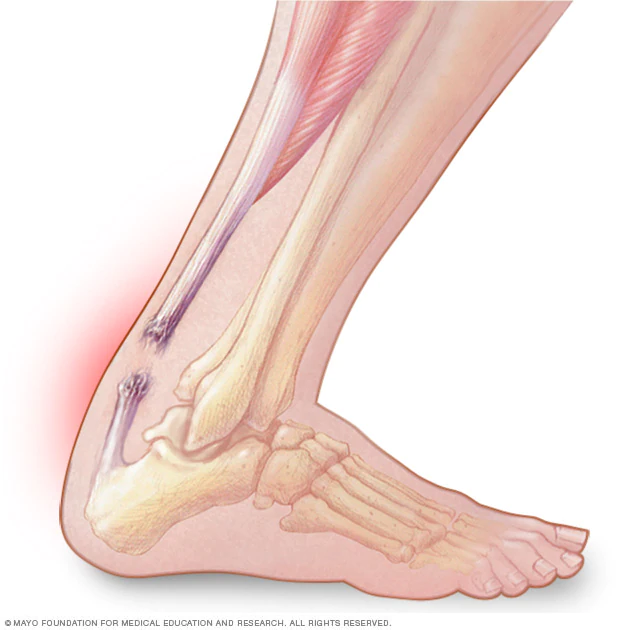The Achilles tendon is a strong band of tissue that connects the calf muscles to the heel bone. An Achilles tendon rupture occurs when the tendon tears, typically resulting from a sudden and forceful movement of the foot or ankle. This injury is often associated with sports activities that involve running, jumping, or quick direction changes.
Some common signs and symptoms of an Achilles tendon rupture include:
- Sudden and severe pain in the back of the ankle or calf.
- A popping or snapping sensation at the time of injury.
- Swelling and tenderness near the heel.
- Difficulty or inability to bear weight on the affected leg or to push off the ground while walking.
If you suspect an Achilles tendon rupture, it’s crucial to seek immediate medical attention. A healthcare professional, such as an orthopedic specialist or sports medicine doctor, can perform a physical examination and may order diagnostic tests such as an ultrasound or MRI to confirm the diagnosis.
The treatment options for Achilles tendon ruptures may vary depending on various factors, including the severity of the injury, the individual’s overall health, and their activity level. Non-surgical treatment may involve wearing a cast or walking boot and using crutches to immobilize the ankle. Surgical treatment may be recommended for more severe cases or for individuals who are physically active or require a quick recovery.
Recovery from an Achilles tendon rupture can be a lengthy process, often involving physical therapy and rehabilitation exercises to restore strength, flexibility, and function to the ankle. It’s important to follow the advice and treatment plan provided by your healthcare professional to optimize your recovery and reduce the risk of complications.
Remember, it’s always best to consult with a healthcare professional for an accurate diagnosis and appropriate treatment options tailored to your specific situation.



